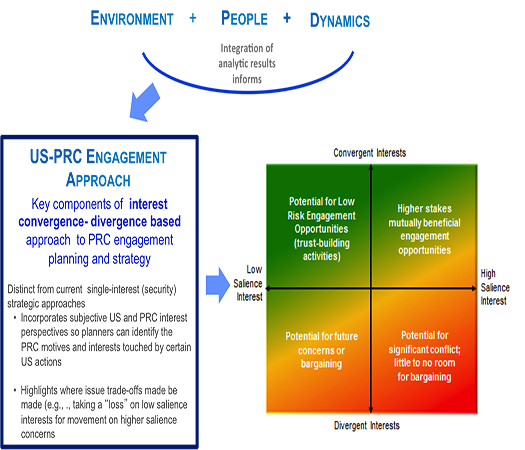STRATEGIC CONFLICT & CONVERGENCE DRIVERS IN ASIA-PACIFIC REGION
NSI participated in a large effort focused on identifying drivers of conflict and convergence in the Asia-Pacific region in the next two decades. We examined future political, security, societal, and economic trends; identified where US strategic interests are in cooperation or conflict with Chinese and other interests worldwide, and in particular, to the East China Sea; and assessed drivers of divergence, conflict, and convergence when dealing with China in a global context.

Drivers of Conflict and Convergence in the Asia-Pacific Region
NSI participated in a large effort focused on identifying areas of strategic risk and opportunity in the Asia-Pacific region over the next two decades. A rising China resides within a very dynamic Asia-Pacific region. A long list of Chinese influence and investment activities abroad together with an active military enhancement program indicate that China is positioning itself to pursue national security interests well beyond the Pacific Rim. As Chinese interests and policy objectives broaden to farther reaches of the globe there is greater likelihood that they will run up against key US international interests. The intersection of US and Chinese interests could represent either a source of conflict or opportunity for cooperation. The main question that US policy makers and planners must consider carefully is: Where and which Chinese interests are most likely to conflict with US global interests, and where may there be opportunities for cooperation? The current problem this project addressed is uncertainty about the likely trajectory of increasingly global Chinese national interests abroad and how these relate to key US interests. The primary objective was to provide decision-makers the tools to make better sense of the non-linear dynamics and feedback mechanisms at play in the complex environment in which they, and their competitors, operate in the Asia-Pacific region, and broaden the horizon of strategic thinking and inform planning.
NSI utilized techniques from our human behavior analytics to examine future political, security, societal, and economic trends; identify where US strategic interests are in cooperation or conflict with Chinese and other interests worldwide, and in particular, to the East China Sea; and assess drivers of divergence, conflict, and convergence when dealing with China in a global context. NSI developed the US-PRC Global Engagement Framework based on the inputs and variety of analytic results produced by other team members to facilitate consistent and coherent integration. Some “key parameters” of the US-PRC Global Engagement Framework included US-China economic trade barriers, imbalances, opportunities, environmental concerns, food security, agricultural policies, water management, carbon-based fuel alternatives, scarcity of resources (competition and cooperation), freedom / denial of access and intrusion issues, military challenges and opportunities, technology and academic exchanges, human rights, national demographics and their impacts on economies, human migration, and third world development. NSI also helped bridge strategic level analysis and operational level needs to ensure the concepts, analyses and results were actionable for end-users such as military planners, strategists and/or decision-makers.